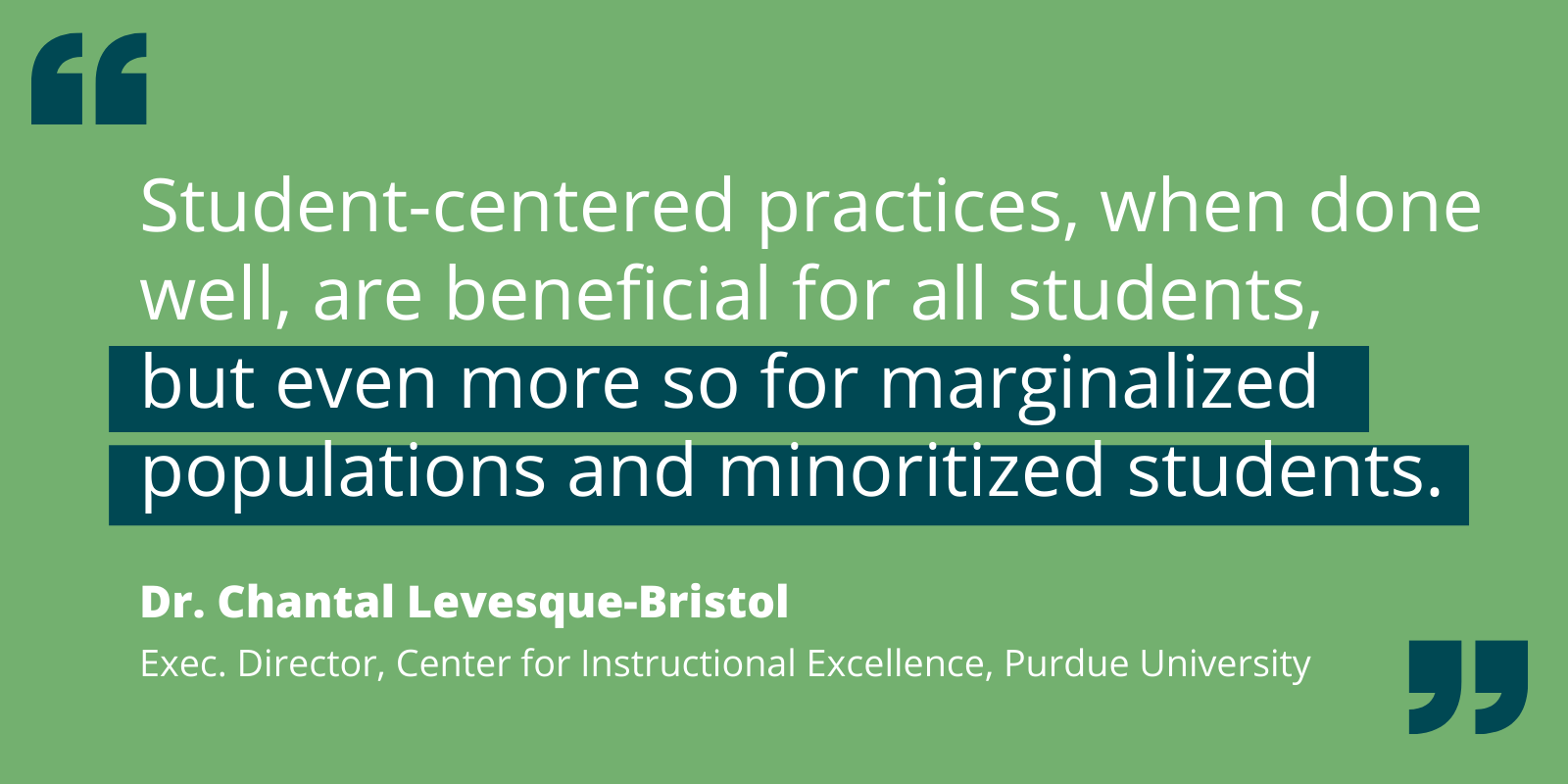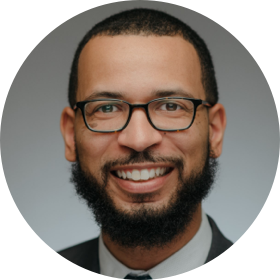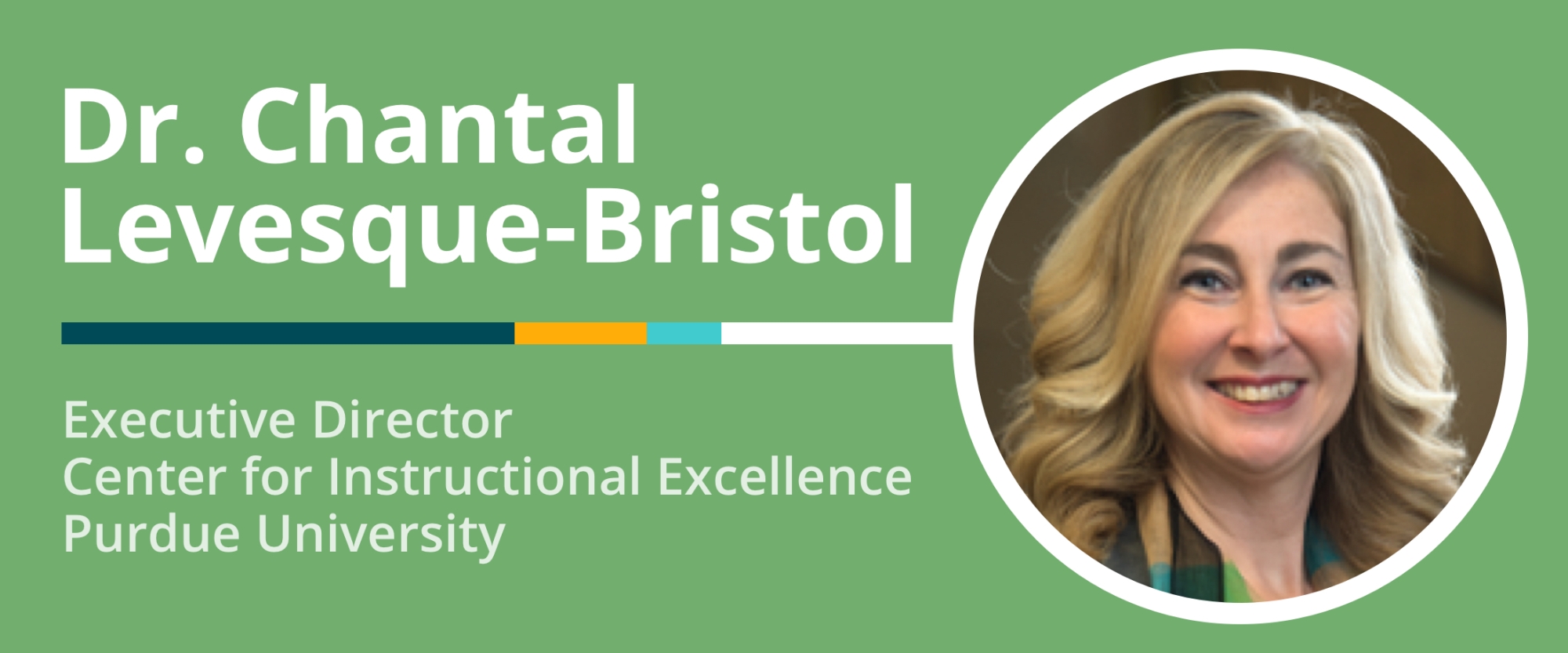Note: This interview in the Scholarship to Practice Series originally aired on June 24, 2021 as part of the University Innovation Alliance’s Innovating Together Podcast, appearing live on Facebook, Twitter, and LinkedIn.
The University Innovation Alliance (UIA) is excited to bring you the Innovating Together Podcast, a collaboration with Inside Higher Ed. I'm the UIA's Executive Director, and my co-host for Innovating Together's Scholarship to Practice Series is Dr. Derrick Tillman-Kelly, Director of UIA's Fellows Program and Network Engagement. Scholarship to Practice focuses on research, relevant yet not widely known, about topics that higher ed leaders need to hear about. For our 6/24/21 episode, we spoke with Dr. Chantal Levesque-Bristol, Executive Director of the Center for Instructional Excellence at Purdue University and author of Student-Centered Pedagogy in Course Transformation at Scale: Facilitating Faculty Agency to Impact Institutional Change. Dr. Levesque-Bristol enlightened us about her research on student-centered learning, what it really is versus what it's commonly perceived to be, and how it can be used to include marginalized or minoritized student populations in the learning outcomes they deserve.
Motivational Building Blocks
Describing her work, Dr. Levesque-Bristol stated, "I research motivation. And most of the applications are in the domain of education. I work with instructors and help them create environments that are positive for students. I define student-centered practices and pedagogy based in the motivational framework called self-determination theory. We focus on three basic psychological needs: autonomy, competence, and relatedness.
"We focus too much on competence in higher education to the exclusion of the other two," she pointed out. "Competence is about building mastery and skills, but we often forget about relatedness and autonomy. By relatedness, we mean connections with people and understanding how students learn. Autonomy means choices and option. It doesn’t mean doing whatever you want to do. I often refer to it as meaning choice, agency, options within the context defined by the instructors. But within the learning outcomes you want to achieve, giving students the opportunity for choices and option is really important."
Student-Centered Learning
Dr. Levesque-Bristol elaborated on what she calls autonomy-supportive environments. "We’ll see instructors providing choices and option," she said. "It could be in presentation topics. It could be, 'Would you like to express your knowledge in an exam versus a project?' It could even be inviting students to create questions for a study guide. It’s about listening and taking students’ perspective and feedback into consideration, even changing courses or topics that we’re covering in the course, or the example that we’re using."
She believes that autonomy provides space for exploration and experimentation that enrich learning outcomes. "When we talk about competence," she explained, "it’s about scaffolding the learning activities so that students can demonstrate their knowledge but also have the opportunity to try, fail, and get feedback. 'Where did I go wrong? How can I improve? What did I do well?' And then giving an opportunity for students to try again and continue to learn. All of this builds and contributes to satisfy those basic needs – autonomy, competence, and relatedness. And students feel like the instructor is coming alongside them on their journey to learning. So those are things that we look for when we talk about student-centered learning."
Shifting a Mindset
We asked Dr. Levesque-Bristol whether adopting a student-centered mindset might benefit marginalized or minoritized student populations.
"Student-centered pedagogy really is about a mindset shift," she affirmed. "Even when our work is perceived to be about course transformation, the transformation really occurs in all that the instructors do in the classroom or outside of the classroom. The research shows that these student-centered practices, when done well, are beneficial for all students, but even more so for marginalized populations and minoritized students."

Dr. Levesque-Bristol offered a familiar example. "If you’re late to the classroom, the door will be closed," she said. "Don’t enter because this will be really distracting to the instructor and to other students, and it’s not fair. That’s a very controlling practice that isn't really tied to learning outcomes. So when I hear that, I invite the faculty to think about changing that practice if you can’t connect it to an outcome. Because you may have students who may not have high social-economic status needing a friend to drive them to school. And their ride didn’t show up that day. Or their car broke down. Or you are a single mother and the day care was closed today and the sitter can’t come, but you figured it out and you made an effort to get to class, but you’re ten minutes late, and then suddenly that opportunity to learn with others is taken away from you because you were late. Somehow after you graduate, you can simply say, 'Sorry I was late for the meeting. What did I miss? Let’s jump into the conversation.' So, to me, making this a difference while you’re going through school trying to do all these hard things that are often more difficult for minoritized and marginalized students, that can affect them disproportionately.
"Focusing on the learning outcomes in group work is another good example of this closing-the-door effect," she continued. "Group work is not something that all students are comfortable with. Or speaking up in class may be very difficult, especially in a large classroom. Sometimes it’s how we set up our syllabus. Is that an invitation to learn, or a 20-page contract with all of the things that could go wrong and that you should not be doing, when learning should ultimately be exciting and fun? Those are the kinds of things that we need to think about beyond the teaching practices. And student-centered practice is trying to bring back the students’ perspective so that all students can succeed."
Myths and Strategies
Dr. Levesque-Bristol also hopes to clear up the confusion between student-centered learning and active learning.
"Quite often student-centered practices are active learning," she said. "And when I’m thinking about student-centered practices as meeting the basic psychological needs of autonomy, competence, and relatedness, I think that active learning does not mean activity. That’s the myth there. If I walk into the classroom and it's loud and there’s activity, it’s not necessarily active learning, because it may not necessarily be student-centered and meet the basic psychological needs of autonomy, competence, and relatedness. I could walk into a classroom and see group work, but if I assume that’s active learning, I may be mistaken, because active learning really needs to come from the activity within. The reflection that the students are doing, there’s activity in the engagement. And that can be very quiet. It can be a very personal experience."
Dr. Levesque-Bristol suggested a few simple strategies for student-centered learning. "I’m thinking about fair share, which you can do with the use of technology in a large classroom," she offered. "Pose a question. Have every student think about their answer to that question. Maybe jot something down or use the clicker system to post a comment. Then pair with the person next to you and discuss this answer. It doesn’t need to be in-group. Or it could be a minute paper. At the end of class, reflect on what’s still difficult for you to understand and what is clear now from the session that we’ve been through. But active learning could also be very complex strategies like team-based learning. Or something very clever that was done at Purdue: Concept point recovery is taking a test, making some mistakes, and having the opportunity to re-work a problem that you missed. The instructor meets the student face to face at their office hours to explain the answer that they got wrong, and they can recover their points. We have lots of research on CPR. It can be very complex and time-intensive, but it doesn’t have to be to build that connection and relatedness."
Human Motivation
We ended our conversation with Dr. Levesque-Bristol by asking her the most important factor needed to achieve transformation and institutional change.
"The innovation which I discuss in the book is that it’s about people," she told us. "Focusing on human motivation, whether it’s with the faculty or the students. And that’s how we enact that mindset shift. It’s investing in people. It’s not about implementing one technology or one design, because you can’t scale this, and you can’t enact the institutional change, because it’s not a common thread. So focusing on the theory and human motivation, and talking about those needs of autonomy, competence, and relatedness, that’s our commonality. Focusing on the students’ psychological needs is the key for that transformation to be scalable and institutional. And we do the same thing if we’re talking about culture change. Or organizational change. The work that I do has application beyond pedagogy – when you recruit faculty, when you retain faculty, when you recruit and retain students. So that’s really the innovation. Again, a simple idea – focus on people. But very difficult to do well."
Links Mentioned in This Episode
• Center for Instructional Excellence at Purdue University
• Student-Centered Pedagogy in Course Transformation at Scale: Facilitating Faculty Agency to Impact Institutional Change by Chantal Levesque-Bristol
• Student-centered learning (pedagogy built on three basic psychological needs: autonomy, competence, and relatedness)
• Self-determination theory (leading theory in human motivation)
• Clicker system (a classroom response system as described by Vanderbilt University's Center for Teaching)
• Minute paper (a classroom assessment technique as described by the Center for the Enhancement of Learning & Teaching at Tufts University)
• Team-based learning (instructional method giving students greater autonomy and responsibility as described by Vancouver Island University)
Keeping Up With Dr. Chantal Levesque-Bristol
Dr. Levesque-Bristol invites you to learn more about her work through her book, available from Stylus Publishing, LLC. She looks forward to hearing from you via LinkedIn or email at cbristol@purdue.edu.
Bios of Guest Luminary and Co-Hosts

Guest Luminary: Dr. Chantal Levesque-Bristol, Executive Director of the Center for Instructional Excellence at Purdue University
Dr. Chantal Levesque-Bristol, a professor of Educational Psychology, has led Purdue University's Center for Instructional Excellence (CIE) since her appointment in 2012. The CIE is part of an institutional team that comprises the Provost's Office, Teaching and Learning Technologies Unit, Institutional Assessment, the Purdue University Library and School of Information Studies, and the Evaluation and Learning Research Center. Dr. Levesque-Bristol received her B.A. in 1995 and Ph.D. in 2000, both in Social Psychology, from the University of Ottawa, Canada. She moved to Rochester, N.Y., and taught at Missouri State University before coming to Purdue. A native French speaker, she completed her course work in French and wrote her doctoral dissertation in English. Dr. Levesque-Bristol's primary areas of interest are teaching and learning, motivation, educational psychology, faculty development, and institutional change. She is the Principal Investigator on a First in the World Grant from the Department of Education.

Co-Host: Bridget Burns, Executive Director, University Innovation Alliance
Dr. Bridget Burns is the founding Executive Director of the University Innovation Alliance (UIA). For the past decade, she has advised university presidents, system chancellors, and state and federal policy leaders on strategies to expand access to higher education, address costs, and promote completion for students of all backgrounds. The UIA was developed during Bridget’s tenure as an American Council on Education (ACE) Fellowship at Arizona State University. She held multiple roles within the Oregon University System, including serving as Chief of Staff and Senior Policy Advisor, where she won the national award for innovation in higher education government relations. She was a National Associate for the National Center for Public Policy and Higher Education, and has served on several statewide governing boards including ones governing higher education institutions, financial aid policy, and policy areas impacting children and families.

Co-Host: Derrick Tillman-Kelly, Director, University Innovation Alliance Fellows Program and Network Engagement
Dr. Derrick L. Tillman-Kelly serves as the Director of the UIA Fellows Program and Network Engagement for the University Innovation Alliance. He previously served in multiple roles at The Ohio State University, including as the inaugural UIA Fellow and special assistant to the director of the Center for Higher Education Enterprise. Dr. Tillman-Kelly earned his Ph.D. in educational policy and leadership with a specialization in higher education and student affairs from Ohio State; a master’s degree in higher education and student affairs from Indiana University; and a bachelor’s degree from Illinois Wesleyan University.
About Scholarship to Practice
Scholarship to Practice is an event series that happens live on Facebook, Twitter, and LinkedIn. It also becomes a podcast episode. We interview higher education scholars, researchers, and academics that distill how a practitioner or administrator could apply learning in real-time to improve student success. At the UIA, we know that we need to bridge that gap between scholarship and practice if we’re going to stand a chance of improving student success. We all need to work together leveraging research in the field and identifying where we need more research to support greater innovation in higher ed. With its short and conversational format, this show is designed to help bridge that gap by elevating the relevant research we all could be using in our daily lives.
Rate, Review & Subscribe
Learn why hundreds of people have rated this new podcast 5 stars! Please join others and rate and review this podcast. This helps us reach and inform more people -- like you -- to help increase the number and diversity of college graduates in the United States.
Click here, scroll to the bottom, tap to rate with five stars, and select “Write a Review.” Then be sure to let us know what you loved most about the episode! Also, if you haven’t done so already, subscribe to the podcast. We’ll be adding a bunch of bonus episodes to the feed and, if you’re not subscribed, there’s a good chance you’ll miss out.

